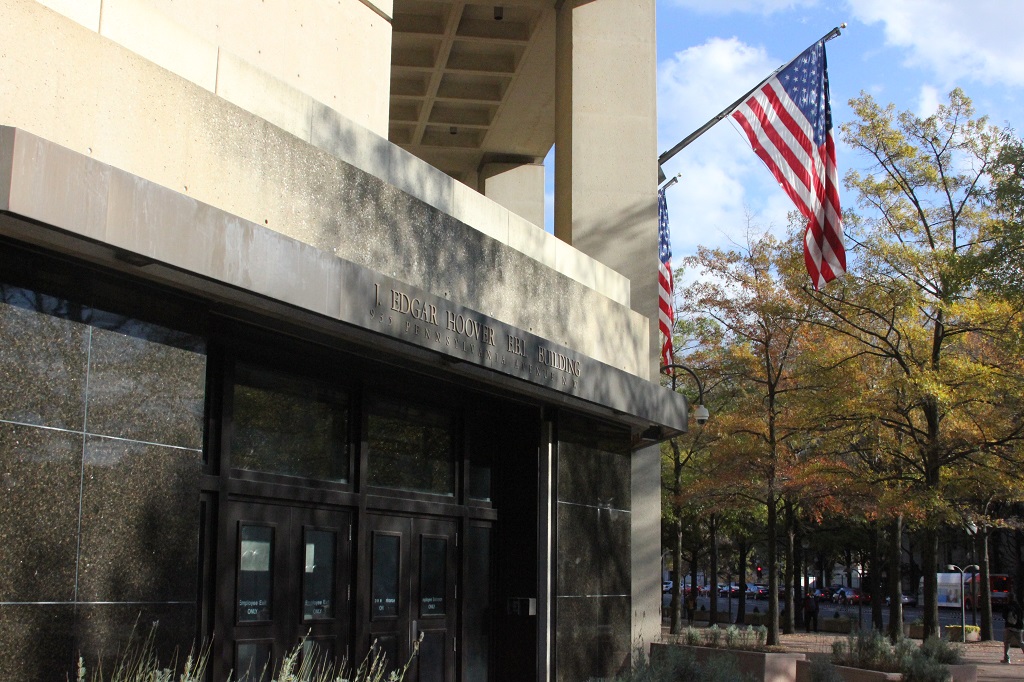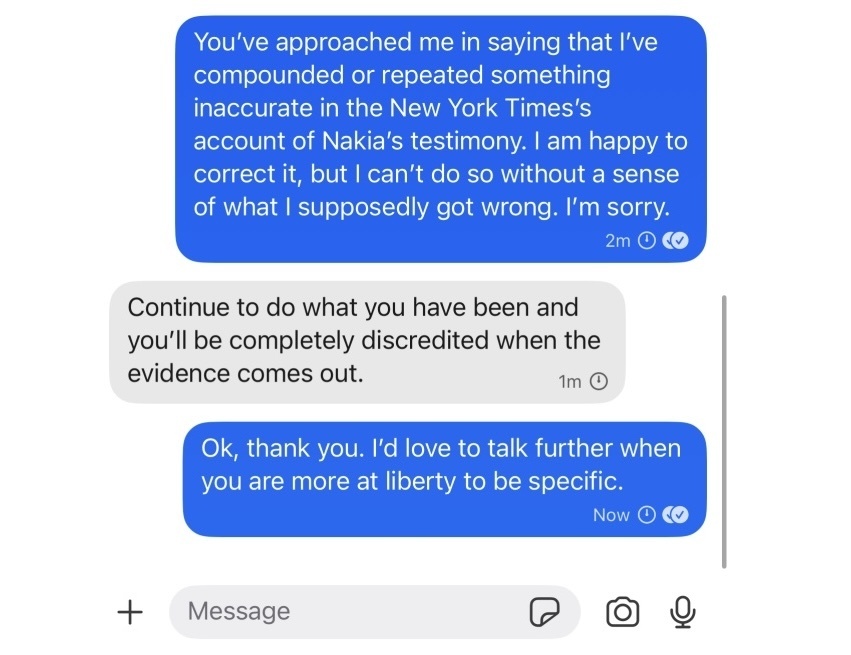A Primer on FBI Personnel Disputes

Published by The Lawfare Institute
in Cooperation With

When the FBI fired three of its most senior officials in August—including former Acting Director Brian Driscoll—it did so with one-page letters citing a “fail[ure] to execute and perform requested tasks.” Driscoll, a 17-year veteran who had led the bureau’s Hostage Rescue Team and Critical Incident Response Group, was informed that he was “summarily dismissed” under FBI Director Kash Patel’s authority. The letter offered no advance notice, no opportunity to respond, and a single procedural reference: “If applicable, you may appeal this decision to the Merit Systems Protection Board.”
Qualifying this procedural notice as “if applicable” carries particular significance in the context of the Federal Bureau of Investigation. Most FBI employees have no right to appeal removals to the Merit Systems Protection Board (MSPB), the independent tribunal that reviews disciplinary actions for most civil servants. There are limited exceptions—most notably for preference-eligible veterans in adverse actions and for whistleblower retaliation claims—but most FBI employees cannot appeal a removal to the MSPB. Instead, the bureau operates under its own internal review system, established decades ago on the theory that the bureau’s sensitive missions required special handling.
Driscoll filed a lawsuit in the U.S. District Court for the District of Columbia. He and two other senior executives allege they were fired after refusing to carry out politically motivated personnel actions. Whether or not those allegations prove true, the case raises a larger structural question: What happens when the nation’s premier law enforcement agency disciplines its own leadership through a system that lacks independent oversight?
The FBI’s Personnel System
Civil service laws divide federal employees into three separate personnel systems: the competitive service, the excepted service, and the Senior Executive Service (SES). Most career employees fall within the competitive service, which requires employees to undergo competitive examination before their hiring. The president may exempt positions from the competitive service and place them into the excepted service. All FBI personnel are placed into the excepted service by statute.
For most federal employees, the rules of discipline and removal are well established. Under 5 U.S.C. § 7513(a), an agency may remove, suspend, or demote an employee only “for such cause as will promote the efficiency of the service.” Before any removal becomes final, § 7513(b) requires that the employee receive written notice, an opportunity to respond, and the right to appeal to the MSPB, which serves as an independent check on agency management. And 5 U.S.C. § 2302 prohibits politically motivated personnel actions and provides that employees cannot be removed because of their political affiliation or other prohibited reasons.
The FBI sits outside that system. Bureau employees belong to the excepted service and are expressly excluded from MSPB review, meaning most cannot challenge removals before an independent body. Section 7511(b)(8)—enacted as part of the Civil Service Reform Act of 1978 (CSRA)—carves the FBI out of Chapter 75, Subchapter II, which otherwise governs adverse actions for most federal employees. When Congress later expanded MSPB jurisdiction to other excepted-service employees in 1990, it intentionally preserved the FBI’s exemption, citing the bureau’s “sensitive mission.”
Instead, the Department of Justice has adopted a personnel system that mirrors the formal structure of civil service protections but operates almost entirely within the Justice Department. This may obscure outsiders’ understanding of how the system operates in practice—a caveat that is particularly true now, as the FBI reportedly undertakes major changes to its internal organization and its intelligence functions. These developments suggest that aspects of the bureau’s current structure may be in flux. Consequently, it is worth noting that the following analysis relies on publicly available rules that may no longer be fully applicable as a result of the recent changes.
Unlike most federal agencies, this system is established by internal policy—not statute or Office of Personnel Management regulations. In place of the MSPB’s external oversight, the FBI uses an internal review hierarchy administered by the Office of Professional Responsibility (OPR) and other Justice Department components.
The FBI’s internal disciplinary process governs most of the special agents and professional staff within the bureau, with two main exceptions. First, preference-eligible veterans retain the right to appeal adverse actions to the MSPB. Second, the process does not apply to the FBI’s most senior executives—the director, deputy director, associate deputy director, executive assistant directors, general counsel, and any Senior Executive Service officials. Those officials fall under the attorney general’s direct disciplinary authority, based on recommendations from OPR or the Office of the Inspector General (OIG).
For everyone else, the disciplinary process unfolds in five stages: reporting, investigation, adjudication, appeal, and implementation. A 2021 OIG review provides the most comprehensive, publicly available description of how these stages function in practice. The process parallels the civil service’s procedural protections for serious penalties even though the FBI operates outside that system.
Allegations of misconduct are first routed through the Internal Affairs Section of the FBI’s Inspection Division. That office forwards each referral to the Justice Department’s OIG, which reviews the allegations and decides whether to investigate the matter itself or return it to the bureau. Most cases are returned. Within the FBI, the Internal Affairs Section’s Initial Processing Unit determines which of those allegations warrant investigation, and its Internal Investigations Unit (IIU) conducts the inquiry. Once an investigation is complete—whether by the OIG or the IIU—a report of findings is prepared and transmitted to the FBI’s Office of Professional Responsibility for adjudication. The bureau’s OPR is distinct from the department-level OPR at Main Justice and operates within the FBI’s internal disciplinary hierarchy.
The assistant director of OPR and its adjudicators determine whether the allegations are substantiated and what penalty, if any, to impose. If OPR determines that the misconduct is substantiated, it selects a penalty. To determine the penalty, it consults the Bureau’s Offense Codes and Penalty Guidelines—which divide misconduct into 62 offenses across five categories—and weighs mitigating and aggravating factors using the Douglas criteria adopted by the MSPB in Douglas v. Veterans Administration. While the FBI is not bound by MSPB decisions, it uses the Douglas criteria as a matter of internal policy. The 12-factor test developed in Douglas requires consideration of the seriousness of the offense, the employee’s past disciplinary record, and the potential for rehabilitation, among other things. Within the FBI, those factors are initially evaluated by the employee’s division or field office and submitted to OPR, which then weighs that input in determining the final penalty.
Employees who are suspended, demoted, or removed have 10 days to appeal OPR’s decision. Appeals proceed internally, rather than being conducted by the MSPB. Cases involving suspensions longer than 14 days, demotions, or removals are reviewed by a five-member Disciplinary Review Board (DRB) composed entirely of FBI supervisors—two from the agent ranks and two from professional staff, with the human resources executive assistant director as chair.
In recent years, the bureau has increasingly relied on summary dismissal—immediate removal without the procedural protections that apply in ordinary adverse cases. According to the OIG’s report, FBI policy does not define “summary dismissal,” describe when it may be used, or outline its implementation. Yet between 2013 and 2018, more than one-quarter of all FBI removals were summary, and their use has increased over time.
OPR grounds this authority in a 1997 memorandum from then-Director Louis Freeh. The memo authorizes “immediate summary dismissal” in “extraordinary cases” involving public safety, employee security, national security, or “other compelling considerations.” The memorandum also provides that “to ensure that summary dismissal of an employee is exercised only under exigent and compelling circumstances, authority for that decision will not be delegated below the rank of Assistant Director.”
The U.S. Court of Appeals for the D.C. Circuit has confirmed that the Freeh Memorandum “preserves the FBI Director’s discretion to summarily terminate employees” and lacks “explicitly mandatory language limiting official discretion.” The court read the memo’s reference to “exigent and compelling circumstances” as merely hierarchical—governing delegation rather than substance. In effect, the decision confirms what the OIG observed from an administrative perspective: The FBI’s disciplinary system imitates the civil service’s procedural architecture but lacks the statutory footing that would make those procedures judicially enforceable.
In other words, the bureau’s internal policies resemble due process, but they do not guarantee it.
Whistleblower Protection
FBI employees who report misconduct operate under a separate statutory framework from the one that governs ordinary discipline. The statute delegates implementation to the attorney general, who promulgates rules to establish an internal system for receiving, investigating, and adjudicating whistleblower complaints. Those rules channel all claims through the Justice Department itself rather than the MSPB, which oversees whistleblower protections elsewhere in the civil service. Under the Justice Department’s implementing regulations, however, protected disclosure may be made not only through internal channels—such as the FBI and Justice Department OPRs, the FBI Inspection Division, or the employee’s chain of command—but also to Congress, as described in 5 U.S.C. § 7211.
To challenge retaliation, however, an FBI employee must begin within the Justice Department. An FBI employee who believes a personnel action was retaliatory must first file a complaint with OPR or the Inspection Division’s Internal Investigations Section. Those offices investigate and forward substantiated cases to the Office of Attorney Recruitment and Management (OARM), a Justice Department component that functions as the bureau’s quasi-adjudicatory body. OARM may dismiss a complaint, find retaliation, or order corrective action such as reinstatement or back pay. Its decisions are subject to review only within the department.
For two decades, that internal loop was the end of the road. FBI whistleblowers had no independent right of appeal outside the department that employed them, leaving the Justice Department to investigate, adjudicate, and ultimately review its own decisions.
The 2023 National Defense Authorization Act changed that. It amended 5 U.S.C. § 2303 to permit an appeal to the MSPB once the Justice Department issues a final decision or fails to act within 180 days. The reform brought FBI whistleblowers closer to parity with other civil servants but stopped short of full equivalence: The Justice Department still controls the initial investigation, the evidentiary record, and the timing of any final decision that triggers MSPB jurisdiction.
Implementation has been slow. A 2024 report by the Government Accountability Office (GAO) found that most FBI employees were unaware of their new MSPB appeal rights and that the Justice Department had not updated its communications, training, or public guidance to reflect the statutory change. The GAO also reported that the Justice Department had not evaluated whether the internal process provides timely or consistent outcomes, noting that OARM and OPR continue to handle cases under procedures written before the amendment. As a result, the bureau’s whistleblower system remains largely self-contained, even after Congress’s reform.
Review of Senior Executives
The FBI’s most senior career officials, such as Driscoll, occupy a distinct personnel tier. Congress created a special Senior Executive Service for the bureau under 5 U.S.C. § 3151 that operates separately from the government-wide SES. The bureau implements that authority through its Senior Executive Service Policy. The policy declares that the system is designed “to protect senior executives from arbitrary or capricious actions,” “maintain a merit personnel system free of prohibited personnel practices,” and ensure an executive cadre guided by the public interest and free from improper political interference.
The policy also establishes a chain of authority that keeps discipline within the Justice Department. The attorney general has final authority over the SES and issues governing regulations, and the deputy attorney general provides overall supervision and final approval for many personnel matters, including those involving the bureau’s most senior officials. The FBI director manages the day-to-day operation of the SES and may “take final action” on most employment matters—but not for “key executives,” a category that includes the executive assistant directors, assistant directors, assistant directors in charge, the general counsel, and any officials who report directly to the director. For those positions, the attorney general and deputy attorney general expressly reserve final approval authority. In practice, OPR investigates alleged misconduct by SES officials and recommends penalties. When key executives are involved, disciplinary authority resides with the deputy attorney general, who may reprimand, suspend, or remove the official after reviewing OPR and OIG findings.
Unlike most FBI employees, senior executives cannot be dismissed at will. Under 5 U.S.C. § 7543(a), removals and suspensions follow the same “for cause” standard that governs other members of the Senior Executive Service: misconduct, neglect of duty, malfeasance, or refusal of a reassignment. Section 7543(b) also guarantees procedural safeguards: at least 30 days’ advance written notice, an opportunity to respond, the right to counsel, and a written decision with reasons. The FBI’s SES policy adds that the bureau may not rely on undisclosed material in reaching its decision. Those protections mirror the process that applies to senior executives elsewhere in government.
But 5 U.S.C § 3151(a)(5)(D) draws a crucial distinction. For most SES officials government-wide, appeals go to the MSPB. For the FBI’s SES, however, any hearing or appeal must occur under “procedures established by regulations of the Attorney General.”
The result is a small cadre of senior executives who can be removed only for cause yet lack any avenue of review before an independent adjudicator, such as the MSPB or the federal courts. Their procedural rights resemble the civil service framework in form but terminate within the Justice Department itself.
Practical Implications of the FBI’s Personnel Structure
The dismissal of Brian Driscoll exposed not just the opacity of the FBI’s personnel system but also a potential breach of its governing law. His one-page termination letter—delivered without notice, hearing, or explanation—stated that he was “summarily dismissed” under the director’s authority. That phrasing echoed the bureau’s internal policy of summary dismissal for ordinary employees, an informal mechanism used to remove line agents swiftly. But Driscoll was not a line agent. He was a member of the FBI’s Senior Executive Service, a category Congress expressly shielded with statutory “for cause” protections and procedural guarantees.
Under 5 U.S.C. §§ 3151 and 7543, members of the FBI’s SES may be removed only for cause—misconduct, neglect of duty, malfeasance, or refusal of reassignment—and only after written notice, an opportunity to respond, and a reasoned final decision. Nothing in that framework permits summary removal.
In Langeman v. Garland, the D.C. Circuit upheld that policy for line employees, finding that it preserved broad managerial discretion and imposed no mandatory limits. But Langeman also underscores the distinction between line agents and SES officials: The Freeh policy governs internal discipline for regular agents and staff, not the statutory regime Congress established for the FBI’s SES members. Congress created that separate regime precisely to ensure that the senior executives who sit between political appointees and the bureau’s main workforce could not be removed without notice or process. By treating an SES official’s removal as a “summary dismissal,” the bureau appeared to apply an internal practice designed for ordinary employees to a category of personnel whose protections are set by statute. That disconnect sits at the heart of the procedural tension Driscoll’s case brings to light.
The bureau’s highest-ranking career officials—those with the most responsibility—are also the only employees with formal statutory tenure protections. Line agents, by contrast, can be summarily dismissed under internal policy with no external review. In theory, that hierarchy promotes accountability: Senior leaders face the most scrutiny. But when the bureau collapses those distinctions, as it appears to have done in Driscoll’s case, the result is a system where no one is meaningfully protected.
This paradox reveals a deeper tension in the FBI’s disciplinary framework. Congress designed the bureau’s system to preserve operational independence and keep sensitive matters out of public litigation while retaining control within the Justice Department. Yet the same insularity that shields the bureau from outside interference weakens the procedural guardrails that protect its career leadership from politicized removal.
Two immediate issues follow. First, the meaning of “for cause” inside an agency with no external review is slippery. In most of government, that standard is enforced through MSPB or judicial oversight. Within the FBI, it is interpreted by the same officials who implement it. That structure leaves no neutral forum to determine whether a dismissal truly met the statutory threshold.
Second, the broader effect on bureau culture and accountability is troubling. Without independent review, disciplinary decisions risk being perceived as political even when justified under a for-cause standard. The GAO’s finding that many employees misunderstand their appeal rights reinforces the perception of opacity. Over time, that uncertainty can erode both morale and public trust in the bureau’s neutrality.
Congress’s 2023 amendment granting limited MSPB access to FBI whistleblowers represents a modest step toward external accountability. Whether that experiment broadens to other categories of employees remains to be seen. The Driscoll litigation may therefore serve as an early test of whether the bureau’s distinctive personnel system—built to protect investigative integrity—now risks enabling politicized or arbitrary removals and blurring the lines of accountability it was meant to preserve.





